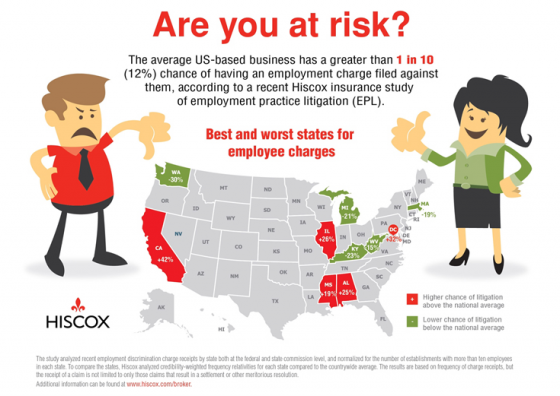Employing reasoning adopted by a number of other courts, the U.S. District Court for the Southern District of Alabama recently dismissed the EEOC’s claim that an employer’s policy prohibiting employees from wearing dreadlocks violated Title VII – the case of EEOC v. Catastrophe Management Solutions. In its ruling, the Court confirmed that “employers’ grooming policies are outside the purview of Title VII,” and it further rejected the EEOC’s argument that the definition of race under Title VII should be read expansively to encompass more than immutable physical characteristics unique to a particular group.
Case Background
The case arose after Chastity Jones, an African-American applicant received an offer of employment from the defendant. At the time of the job offer, the employer had a grooming policy, which provided in part that “hairstyles should reflect a business/professional image” and prohibited “excessive hairstyles or unusual colors.” The employer interpreted the policy as prohibiting the wearing of dreadlocks, and thus conditioned its offer on Jones cutting off her dreadlocks. When Jones declined to do so, defendant withdrew the offer of employment. The EEOC filed suit, alleging that application of the policy to prohibit dreadlocks violated Title VII and that defendant intentionally discriminated on the basis of race. The employer moved to dismiss for failure to state a claim upon which relief can be granted.
EEOC’s Arguments
The EEOC argued that the employer had refused to hire Jones because she was black and that a policy that prohibits dreadlocks is racially discriminatory on its face because dreadlocks were determinant of racial identity. The EEOC also urged the Court to adopt an expansive definition of race under Title VII that would encompass “both physical and cultural characteristics, even when those cultural characteristics are not unique to a particular group.”
As an apparent fallback position, the EEOC argued that dismissal was inappropriate because it should be allowed to present expert testimony on three factual predicates: 1) “that Blacks are primary wearers of dreadlocks”; 2) that dreadlocks are “a reasonable and natural method of managing the physiological construct of Black hair”; and 3) that dreadlocks have a “socio-cultural racial significance” for blacks.
The Court’s Ruling
The Court rejected the EEOC’s arguments and dismissed the EEOC’s complaint. First, the Court identified a number of decisions addressing policies that restricted hairstyles and finding that such policies were non-discriminatory. Agreeing with these decisions, the Court held that a “hairstyle, even one more closely associated with a particular ethnic group, is a mutable characteristic.” The Court also rejected the EEOC’s arguments regarding “socio-cultural racial significance,” noting that culture and race are different concepts and that “Title VII does not protect against discrimination based on traits, even a trait that has socio-cultural racial significance.”
Implications for Employers
This decision further reinforces an employer’s right to establish and enforce grooming policies and describes some parameters on the application of those policies. In addition, when facing EEOC charges which attempt to expand race discrimination under Title VII beyond immutable characteristics, the decision provides support for a defense that mutable characteristics, including traits that have purported “socio-cultural racial significance,” may not be protected as a matter of law.
This blog was previously published by Seyfarth Shaw LLP.



